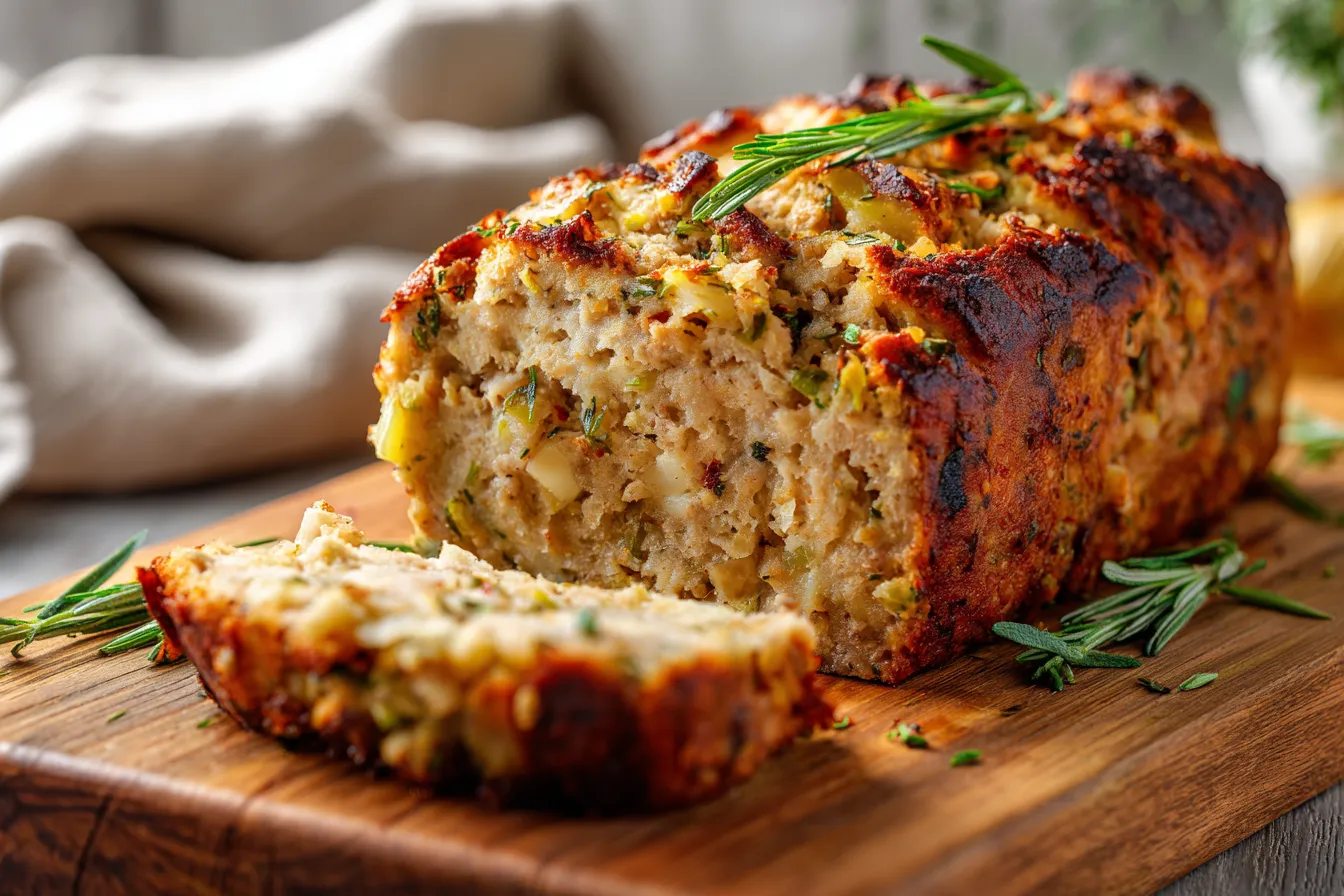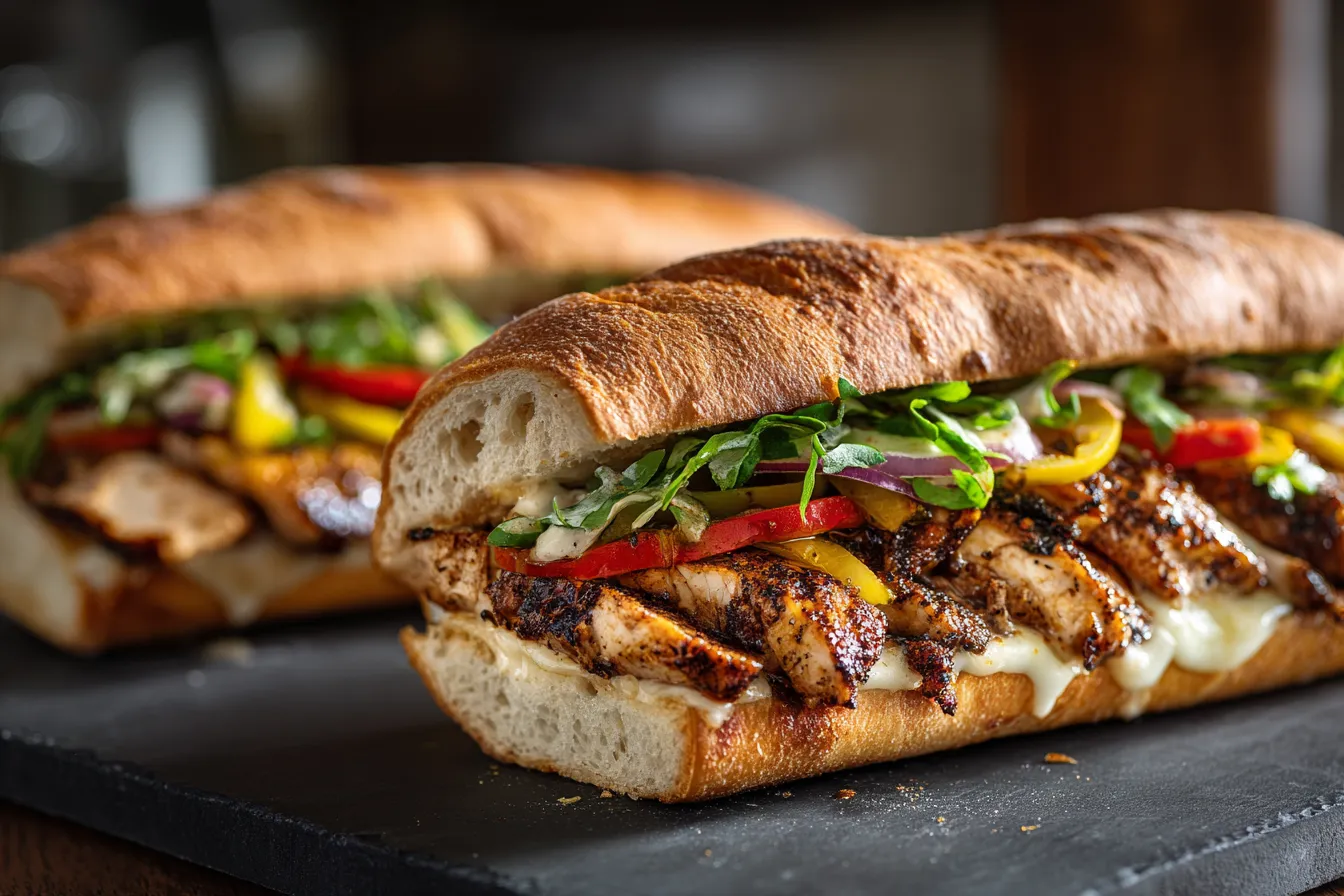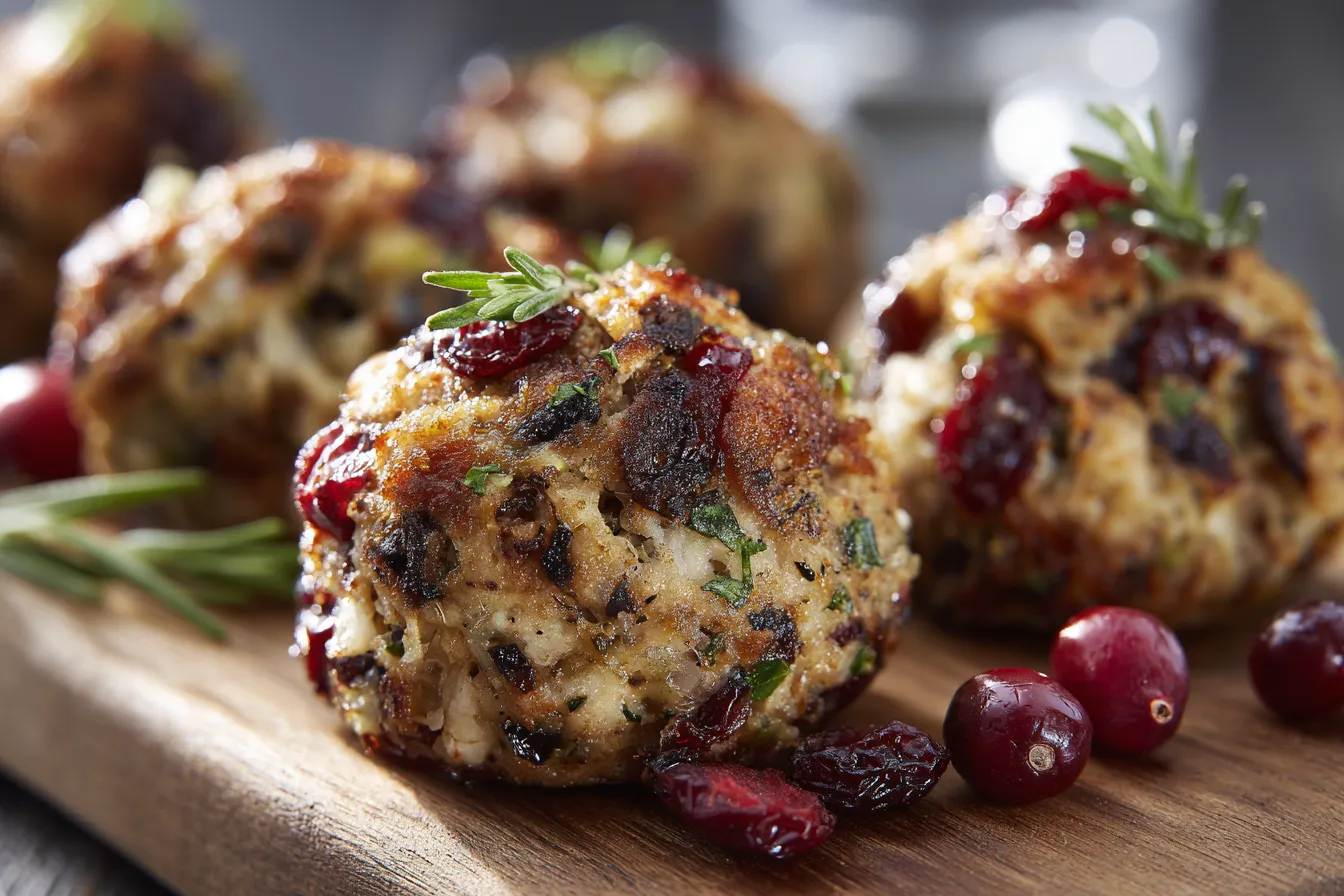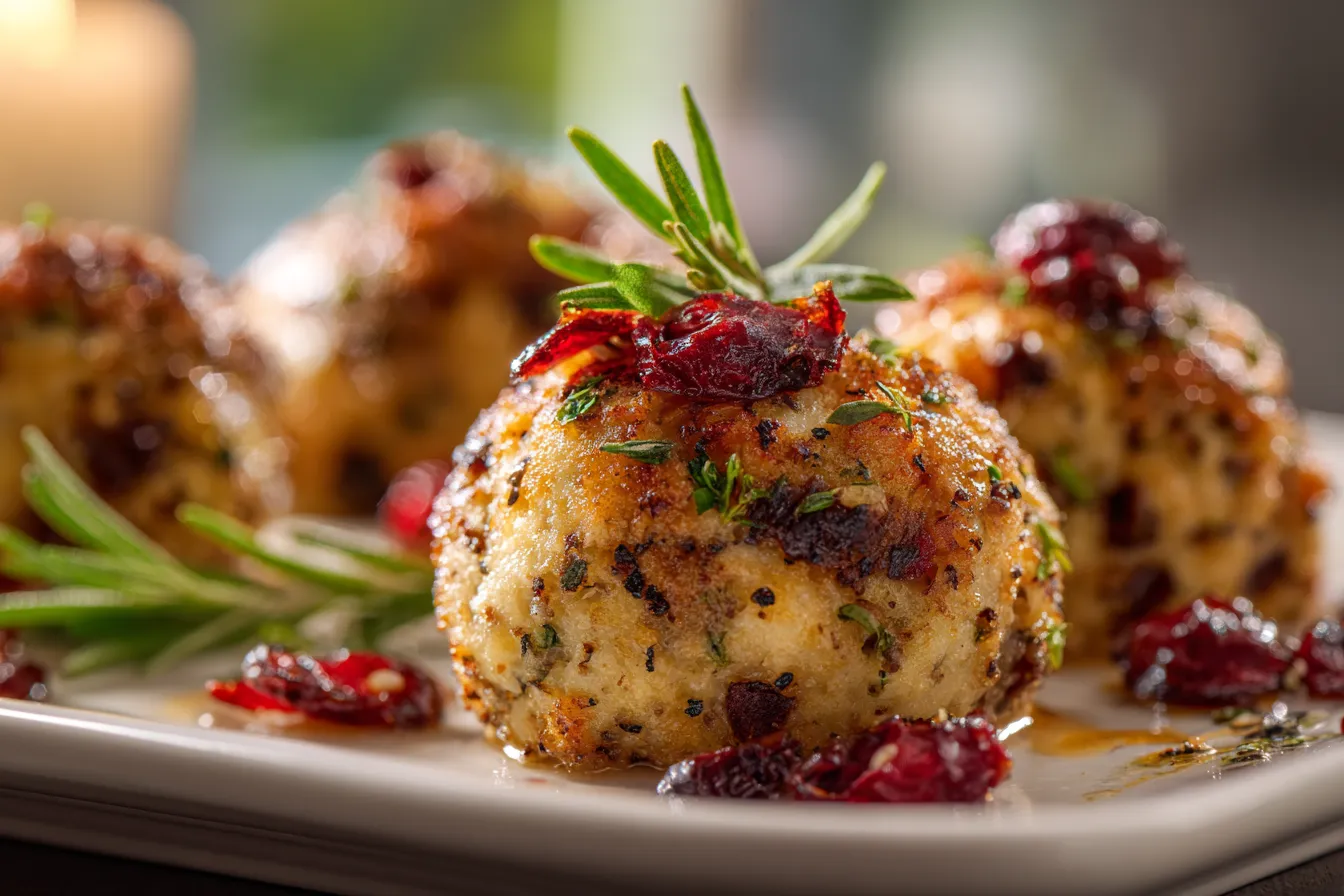Traditional Bread Stuffing: Your Ultimate Guide to a Cozy Classic
When the holiday season rolls around, few dishes evoke the warmth and tradition of traditional bread stuffing. This simple yet delicious side dish, often served with turkey, is loved for its comforting flavors and ability to bring family and friends together. In this comprehensive guide, we’ll delve into the nuances of preparing the perfect stuffing, ensuring it becomes the highlight of your festive meal.
Understanding Traditional Bread Stuffing
The History of Stuffing
Stuffing has roots that stretch back thousands of years. While its exact origin is debated, many believe it began as a method to stretch food supplies. Historically, various grains and meats were used, evolving over the centuries into the bread-based versions we enjoy today.
Why Bread is the Foundation
Bread is the backbone of traditional stuffing. It absorbs flavors and moisture, providing a delightful texture. The choice of bread—be it white, whole grain, or cornbread—can significantly impact the overall flavor of the dish.
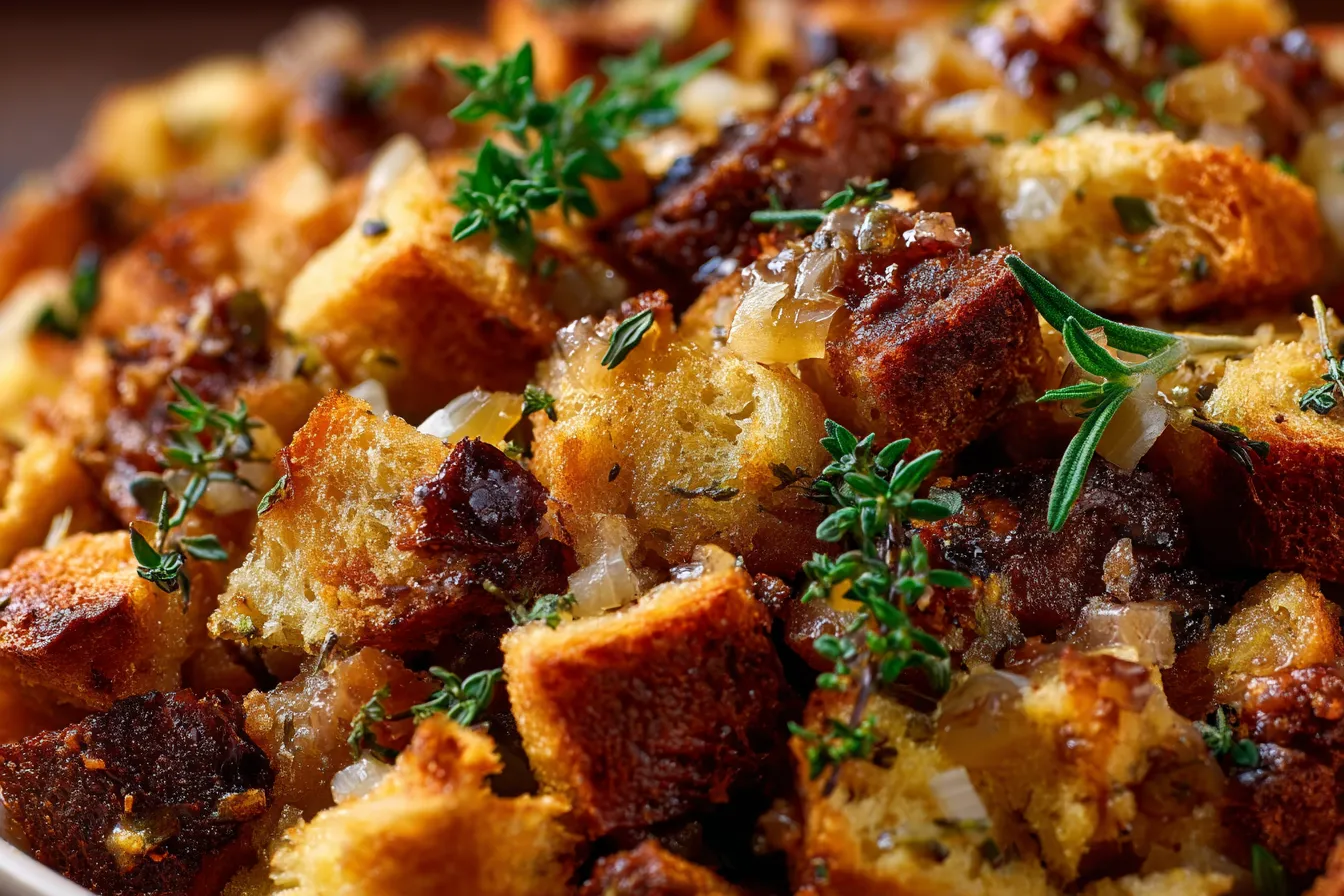
Ingredients for a Perfect Stuffing
Main Ingredients
- Stale bread (about 10-12 cups, cubed)
- Onions (2, chopped)
- Celery (3 sticks, chopped)
- Butter (½ cup)
- Chicken or vegetable broth (about 2-3 cups)
- Herbs (sage, thyme, rosemary)
- Salt and pepper to taste
Optional Add-ins
To elevate your stuffing, consider adding:
- Diced apples or cranberries for sweetness
- Sausage or bacon for richness
- Nuts or seeds for crunch
Preparing Your Bread Cubes
The Importance of Stale Bread
Using stale bread is crucial for the best texture. Fresh bread tends to become mushy when baked. If you only have fresh bread, consider toasting the cubes in the oven to dry them out slightly.
Cubing the Bread
Cut bread into even cubes to ensure uniform cooking. Depending on your preferred texture, you can make them small (for a finer stuffing) or larger (for a chunkier style).
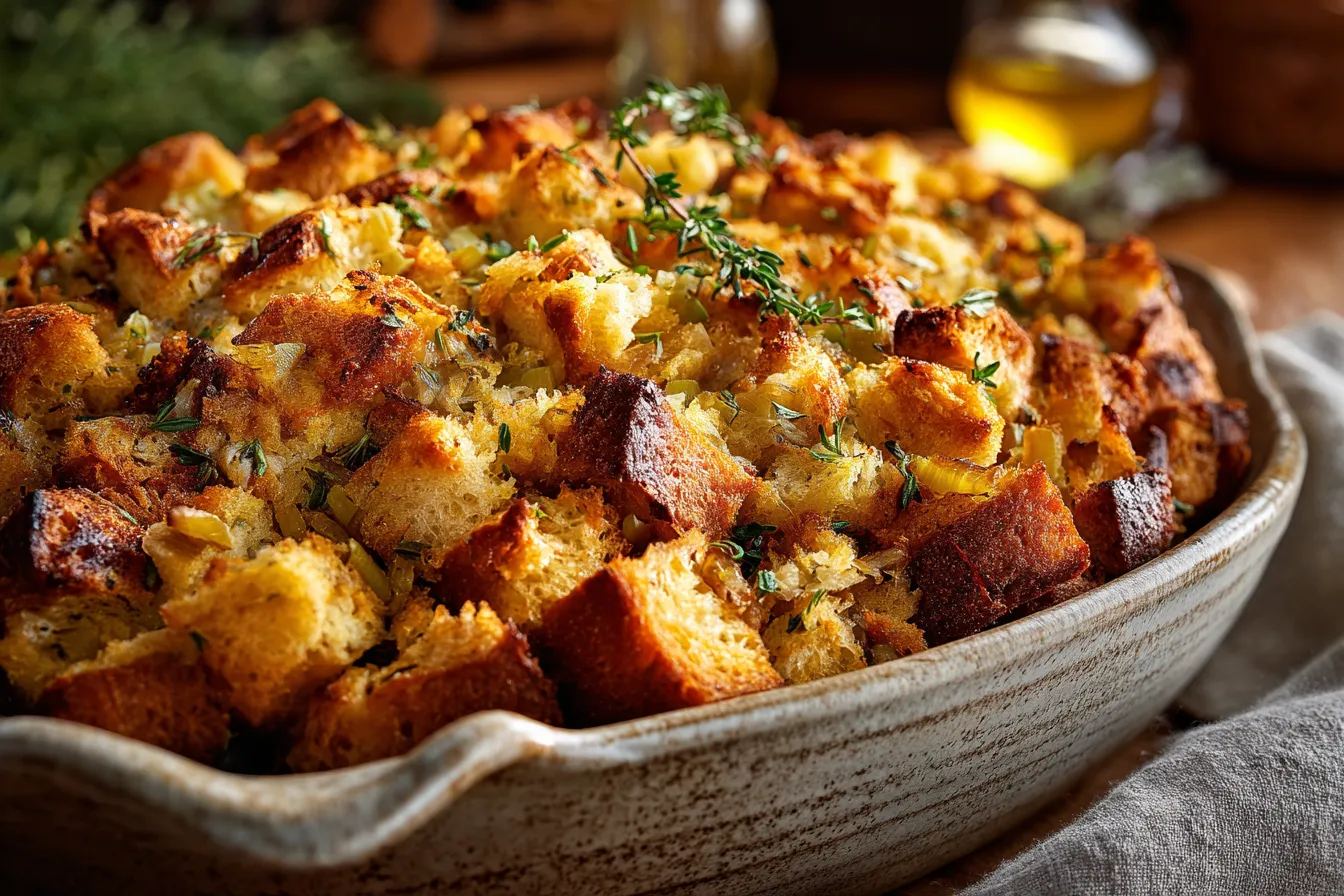
Sautéing the Veggies
<h3.Onion and Celery MixtureSauté chopped onions and celery in butter until they’re soft and aromatic. This step is key, as it releases their flavors, which will be absorbed by the bread.
<h3.Adding SeasoningsOnce the vegetables are softened, add your herbs and spices. Fresh herbs offer a brighter taste, while dried herbs provide a more concentrated flavor. Adjust the seasoning according to your preference.
Mixing Everything Together
<h3.Combining IngredientsIn a large bowl, combine the bread cubes, sautéed vegetables, and broth. The broth should be added gradually until the mixture is moist but not soggy. Taste as you go to ensure it’s seasoned just right.
<h3.Stuffing Versus DressingWhile stuffing traditionally refers to filling the bird, dressing is cooked separately. Both methods yield delicious results, so choose based on preference or dietary considerations.
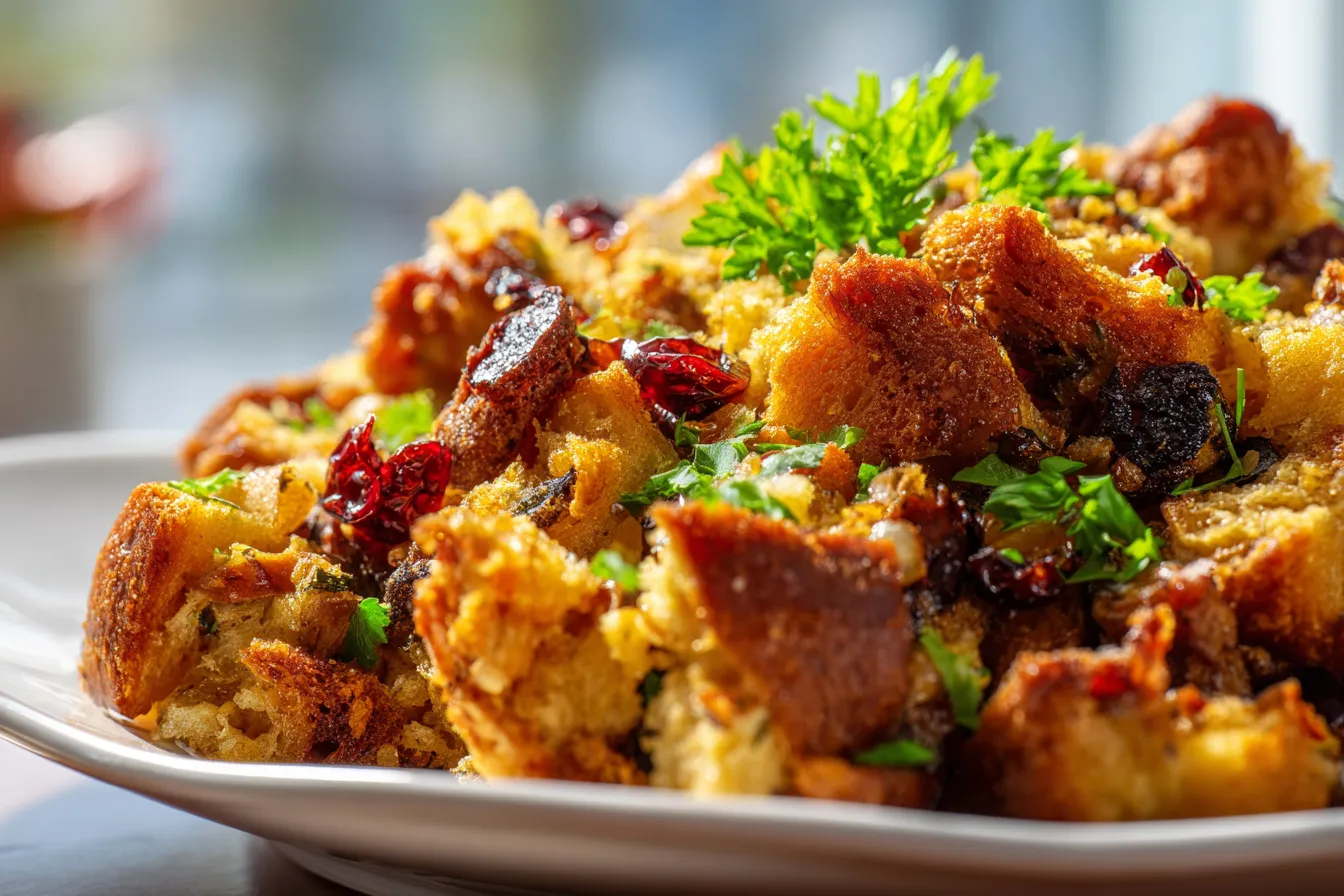
Baking the Stuffing
<h3.Prepping for the OvenTransfer your mixture to a greased baking dish, covering it with foil to retain moisture. Bake at 350°F (175°C) for about 30 minutes, then remove the foil to allow the top to brown.
<h3.Tips for CrispinessFor a crispier top, consider broiling the stuffing for the last few minutes of cooking. This will create delightful golden edges and add texture.
<h2.Enhancing Flavor Profiles <h3.Exploring Different RecipesEvery family has its version of traditional bread stuffing. By experimenting with different types of bread and flavorings, you can create unique variations. Consider adding sausage, mushrooms, or even southwestern spices for a twist.
<h3.Pairing with ProteinsTraditional bread stuffing is typically paired with turkey, but it’s equally delicious alongside chicken, pork, or beef. Adjust the seasonings based on the protein to create harmony in flavors.
<h2.Storing and Reheating Your Stuffing <h3.Refrigeration and Freezing TipsIf you have leftovers, store them in an airtight container in the fridge for up to four days. For longer storage, consider freezing. Just ensure it’s thoroughly cooled before sealing.
<h3.Reheating InstructionsTo reheat, place the stuffing in an oven-safe dish. Add a little broth to keep it moist and bake at 350°F (175°C) until warmed through. This method will also help refresh the crispiness of the top layer.
Frequently Asked Questions
What type of bread is best for stuffing?
While white bread is a classic choice, you can use any type of stale bread. Whole grain, sourdough, or cornbread adds unique flavors and textures.
Can I make stuffing ahead of time?
Absolutely! You can prepare it a day in advance and store it in the refrigerator. Just be sure to add extra broth when reheating to maintain moisture.
Is stuffing gluten-free?
Yes, stuffing can be made gluten-free by using gluten-free bread. Ensure all other ingredients, especially broth, are also gluten-free.
How can I make stuffing vegan?
To make vegan stuffing, substitute butter with olive oil or vegan butter, use vegetable broth, and omit any animal products like sausage or meat.
Can I cook stuffing inside the turkey?
Stuffing can be cooked inside the turkey, but ensure it reaches 165°F (74°C) for food safety. This method imparts flavor but may require longer cooking times.
Conclusion
Traditional bread stuffing is more than just a side dish; it’s a cherished part of holiday gatherings and family traditions. By using quality ingredients and following this guide, you can create a stuffing that everyone will rave about. Whether you stick to the classic recipe or add your special twist, make sure to enjoy this comforting dish with loved ones.
Extracted Internal Links:
Print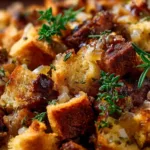
Ultimate Traditional Bread Stuffing Recipe for Irresistible Flavor
- Total Time: 1 hour
- Yield: 8 servings 1x
Description
Discover the ultimate recipe for traditional bread stuffing that guarantees irresistible flavor Perfect for enhancing your holiday meals 154 chars
Ingredients
Instructions
- Prep Time: 30 minutes
- Cook Time: 30 minutes
- Category: Side Dish
- Cuisine: American
Nutrition
- Calories: 250 calories
- Sugar: 2 grams
- Fat: 12 grams
- Saturated Fat: 12 grams
- Carbohydrates: 32 grams
- Fiber: 3 grams
- Protein: 5 grams

